Accelerating Learning for All Children: State Tutoring Initiative Fosters P20 Improvements in Literacy & Mathematics
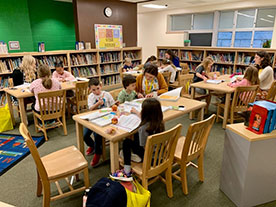
The Ohio Department of Education (ODE) places the literacy and mathematics learning of Ohio’s schoolchildren among its highest priorities. Acting on this commitment, the ODE has invested $14 million in grants to Ohio institutions of higher education (IHEs) to develop or expand literacy and mathematics tutoring programs for Ohio students in kindergarten through twelfth grade. Of the 33 grants awarded to Ohio IHEs in June 2022, the majority focus on providing high-dosage tutoring in both literacy and mathematics; whereas a handful focus only on literacy or only on math.
In part a response to disruptions in schooling that resulted from the pandemic, the Tutoring grants work to accelerate learning, not just provide remedial support. Sarah Wilson, ODE Tutoring Administrator explains:
We are fortunate to have strong support for high-dosage tutoring in Ohio as a key strategy to accelerate learning for students, particularly those who experienced significant learning loss as a result of the pandemic. When we focus on accelerating learning, rather than remediation, we provide students access to grade-level curriculum and instruction—with the appropriate scaffolding and support needed to engage in the content. High-dosage tutoring provides crucial just-in-time knowledge and focuses on addressing barriers to receiving grade-level instruction whereas with remediation, students are only able to access lower grade-level content which ultimately keeps them behind academically.
Why Use Tutoring to Provide Support?
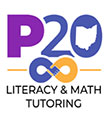
According to researchers at the Annenberg Institute at Brown University and the University of Virginia, a strong evidence base supports the use of high-dosage tutoring to improve learning for a wide range of students, including those who may have fallen behind academically. High-dosage tutoring is defined as tutoring that is provided more than three days per week or at a rate of at least 50 hours over 36 weeks (EdResearch for Recovery, February 2021, p. 2).
In addition to high frequency, effective tutoring requires excellent pedagogy. Other important considerations are focus, relationships, curriculum, measurement, student grouping, and scheduling. The table on this page illustrates effective practices in each of these areas. Information in the table comes from EdResearch for Recovery (February 2021, p. 1).
| Area | Examples of Effective Practice |
|---|---|
| High frequency | Three or more sessions per week of intensive, week-long, small-group programs |
| Excellent pedagogy | Use of a structured literacy approach |
| Focus | Reading-focused tutoring, math-focused tutoring |
| Relationships | Providing students with a consistent tutor over time |
| Curriculum | Using high-quality instructional materials aligned with core classroom content and instruction and/or grade-level standards |
| Measurement | Using assessments and other data that allow tutors to individualize tutoring to meet student needs |
| Student grouping | Providingne-to-one or small-group tutoring for up to three or four students at a time |
| Scheduling | Conducting tutoring sessions during the school day or immediately after school |
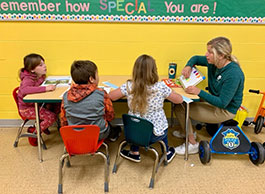
Despite the effectiveness of high-dosage tutoring that focuses on accelerating learning (J-PAL Evidence Review, 2020), a December 2022 School Pulse Survey of more than 1,000 public K-12 schools nationwide conducted by the National Center for Education Statistics (NCES), reported that only about one in 10 students actually receives high-dosage tutoring. NCES also reported that more than four out of five schools focus on remediation, even though research suggests that challenging children by providing accelerated grade-level work is more effective (Camera, 2022). Remediation may, in fact, widen learning gaps over time (EducationWeek, February 9, 2023).
In contrast to some disappointing trends across the US, Ohio’s grant-supported tutoring projects strive to incorporate effective practices. Illustrations from several of these projects offer a glimpse of what effective tutoring for Ohio’s schoolchildren really looks like.
Illustrations from Funded Projects
Shawnee State University (SSU) and John Carroll University (JCU) are among the tutoring grant recipients funded by ODE. SSU, a public university located in southern Portsmouth, Ohio is focusing on effective tutoring in literacy through its Literacy LEAPS project. JCU, a private university in the Cleveland suburb of University Heights, is focusing on tutoring in both literacy and mathematics through its three-pronged JCU Statewide Math & Literacy Tutoring Program.
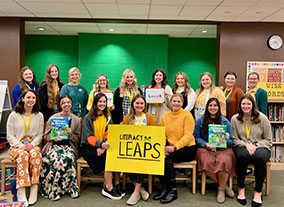
Both IHEs are partnering with area school districts and other partners to increase the use of effective tutoring and explicit, systematic instruction in order to improve outcomes for children and youth, improve faculty and staff understanding of effective practice, and prepare teacher education candidates to effectively teach and support children with a wide range of instructional needs. Information about each program is described below.
Literacy LEAPS. SSU’s Tutoring grant program – Literacy LEAPS – is directed by Lindsay Monihen, a veteran higher education professional who originally joined SSU as Director of Student Advising and Support Services for the College of Professional Studies. A PhD student, Monihen partners with New Boston Local School District – primarily Stanton Primary and Oak Intermediate schools – to provide tutoring to children in kindergarten through fourth grade.
During the fall semester, 18 SSU teacher education candidates provided what Monihen calls “high frequency tutoring” through 74 sessions that served 80 children. “Within one month's time span, we saw urgent intervention decrease by 11% among that population. So we saw some really great outcomes,” said Monihen.
Tutors are preservice students (i.e., teacher education candidates) with the majority studying early childhood and special education through SSU’s blended dual-licensure program. “They're going to have such rich professional experiences. They're going to be able to hit the ground running at a level that candidates who've not had this kind of experience simply will not. So I'm very excited about that,” said Dr. Paul Madden, Dean of SSU’s College of Professional Studies. “New Boston has been one of those districts that has been willing to step up to whatever project, as long as they felt like it was in the best interest of their children, and that it truly would make a difference,” he added.
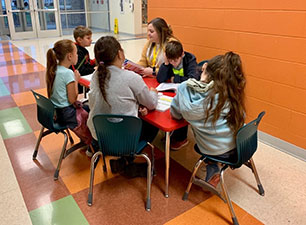
“I consider Literacy LEAPS and our partnership with Shawnee State a privilege. It's wonderful to partner with Lindsay and to help our students. I’m especially excited about our youngest learners, our kindergartners, and how tutoring is enhancing their early foundational skills. We've seen a lot of growth in letters and letter sounds,” explained Christy Dever, principal of Stanton Primary and Oak Intermediate schools. Over her 30+ year career, Dever served in many roles, including as a tutor and preschool and first-grade teacher.
In addition to receiving explicit systematic instruction, which Dever believes is “aligned with the latest research on effect size,” she credits Literacy LEAPS with providing the kind of personalized learning that builds children’s “self-esteem and self-confidence.”
She also views the partnership with SSU as an opportunity to recruit future teachers. “When I walk down the hallways or in and out of the classrooms, I'm not only watching our New Boston teachers, but also the Shawnee students, thinking, ‘Hmm, mental note!’
Tutor Allie Van Bibber experiences first-hand how children are gaining in confidence and skill. “I’ve been able to not only build my own confidence with teaching, but see the kids build their confidence with reading skills and writing.”

Dever and Monihen work together, using universal screening and end-of-year benchmark data, as well as observation and conversation with teachers, to assign SSU tutors to children across all K-4th grade classrooms. In Dever’s buildings, all teahers and about 50% of all children, including those identified as having disabilities, are involved in Literacy LEAPS. “We used a lot of data points to assign tutors to students and our tutors were outrageously gracious through the wild west of when we launched the grant at the end of September,” said Monihen.
The teacher education candidates serving as tutors view the opportunity to work with children as a critical part of their preparation. According to tutor Callie Link, “Literacy LEAPS is an irreplaceable opportunity for anyone who has the opportunity to do this. The professional development that I've had, learning how to communicate with teachers about students and their progress, or things I've noticed behavior-wise with students and being able to ask those questions and dip my toes into that now before I'm actually in charge of my own classroom is completely irreplaceable.” “It's so important to get that experience rather than just sitting in a classroom learning about textbooks and then jumping into the field with no experience,” added tutor Emilee Eplion.
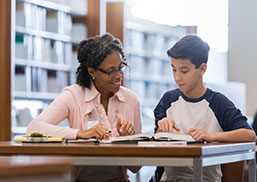
“Literacy LEAPS is providing the opportunity for us to create a literacy learning community for our students,” said Dr. Gay Lynn Shipley, Assitant Dean and Director of SSU’s School of Education. “While they they're learning things in the their four required reading classes, this program also allows them to apply some of the research and foundational work that they learn in the classroom. They're also receiving some very high-level PD [professional development] early in their careers; PD that many classroom teachers who have been at it for years haven't experienced. Another advantage is that many of our faculty here, especially our reading faculty including Dr. Sandra Beam, are also participating in those PD trainings.
Our whole department has embraced this project and have been able to be a part and to learn along the way, because many of us had just participated in the science of reading modules as well. So we all had reading on our radar at that time, too,” she added.
Teacher education candidates serving as tutors are gaining valuable experiences because of the alignment between what is taught by Dr. Beam in their coursework and what they’re using to support children. “We see direct alignment strategies we’re using in tutoring sessions and the strategies that we talked about in our phonics or Foundations of Reading course. Blending is a huge one that we use every day in tutoring, and then read, spell, write for high-frequency words where they practice their sight words. Yeah, so a lot of the strategies that we've already seen, we're using now,” explained tutor Ashley Smith.
Providing opportunities for shared learning and improvement in instructional practice is also fostered through teacher participation in teacher-based teams (TBTs). “Not only are the classroom teachers involved in their TBTs, but our intervention specialists, sometimes our speech-language pathologist, and other staff members that may not be directly involved with Literacy LEAPS. So they're hearing those conversations and progress,” explained Dever.
Monihen attends TBT meetings each semester to gather data from teachers and to share information about progress that students are making. OIP supports alignment and sharing with Lindsay, between teachers including literacy teachers in older grades, and me sharing those big chunks of progress with the DLT and also at our school board meetings,” said Dever.
Dever welcomes SSU tutors to attend TBT, BLT, and DLT meetings and tutors have additional opportunities to “observe teacher meetings, attend an all-staff meeting, and work directly with a speech-language pathologist,” said Link. Fostering the kind of peer-to-peer learning that TBTs support is also facilitated through the tutoring sessions. “I didn’t realize how much students will really learn from each other. They’ll hear another student say a word they were unsure of and they’re able to pick it up because one of their peers said it,” explained Link. “Just hearing it in a different way or hearing it from their peers makes it stick a lot better!” added Van Bibber.
“You can see through a partnership like this where we've taken bits and pieces of different partnerships and collaborations that we've had in the past and we pull them together. And so, in this type of project where there's funding involved and true support from the state level, that's the kind of support that can generate the results that lots of people can learn from and use to make improvements. I'm very much appreciative of the district, the students, and the faculty, and certainly of the Deans Compact to help make this possible,” said Madden.
JCU Statewide Math & Literacy Tutoring Program. JCU’s Tutoring Program involves three partnerships, as described below, and is directed by Dr. Dan Reynolds, Associate Professor of Education at JCU; Dr. Margaret (Peggy) Schauer, Assistant Professor of Secondary Education; Sr. Katherine Feely, SND, EdD, Director of JCU’s Center for Service and Social Action; and Tutoring Coordinator Missy Sullivan.
- Carroll Calculates – a partnership with Gearity Elementary School in the Cleveland Heights-University Heights City School District focused on providing tutoring in mathematics to fifth-grade students;
- Read and Teach Like Me – a partnership with the John Marshall School of Engineering in the Cleveland Metropolitan School District that involves JCU undergraduate students in youth participatory research in six class periods;
-
Literacy Tutoring – a partnership with the Garfield Heights City Schools that involves:
- Tutoring for reading intervention for 9th- and 10th-graders that reaches 36 students across three class periods;
- Tutoring in English/language arts for 11th and 12th graders that reaches more than 40 students preparing for the end-of-course exam required for graduation; and
- Tutoring for middle school students, replicating the approach used at the high school level.

Carroll Calculates, directed by Sr. Feely, provides tutoring in mathematics to Gearity Elementary School fifth graders five days per week during an intervention period. According to Schauer, the program is modeled after a longstanding program called Carroll Reads, and supports university students to provide tutoring services. The tutors are “primarily John Carroll students, not necessarily pre-service teachers; they could be anybody around the campus who support those fifth-grade students and classrooms in mathematics,” said Schauer.
Schauer directs the Read and Teach Like Me component of JCU’s tutoring initiative, supporting nine JCU students who are involved in Youth Participatory Action Research (YPAR) and who provide tutoring weekly, and at additional times each week.

Before joining JCU five years ago, Schauer spent 20 years as a teacher and principal in the Cleveland Metropolitan School District, working in all grades, kindergarten through 12. Her passion is in bringing “marginalized identities” to the teaching profession, and retaining them at JCU. Not surprisingly, she has been intentional in involving preservice teacher candidates from racially, culturally, and ethnically minoritized groups as a way to recruit them into teacher education programs and support them throughout their university experience. She partners with the John Marshall School of Engineering, building on her partnership with the John Marshall School of Civic and Business Leadership, which she established through an Ohio Deans Compact diversifying the educator workforce (DEW) grant.
“One of our recent 2021 graduates teaches seven or eight sections of English Language Arts and we’re working with her in her ninth grade classroom. So, this is really full circle with a JCU grad that we're able to work with and we now have tutors in every one of those classrooms now, so that's a good bonus,” explained Schauer.
“Our students who are tutoring who have been through most of the four-course literacy sequence are feeling very confident, and it's a great way for them to apply what they've learned,” said Schauer. “One of our full-time Black, Indigenous, and people of color (BIPOC) candidates was working 40 hours a week at the Amazon plant – four 10 hour overnight shifts – and you can imagine that that wasn't working well. And so, being able to connect her with this ninth grade tutoring opportunity has given her the ability to cut down on her hours and then do something that's relevant to her future as an educator. So, that's been a really great success story and work of the grant,” she added.

JCU’s model is designed to meet the needs of multiple partners. Dr. Dan Reynolds, a former high school English teacher whose research focus is on adolescent literacy, is coordinating tutoring in Garfield Heights High School reading intervention classes. “We've hired a team of tutors to provide ninth- and tenth-grade reading and literacy support during reading intervention classes in the middle of the day. We've trained tutors to provide individualized support for students who need to pass the ELA-2 exam, who are mostly 11th and 12th graders, and have been working closely with the district to identify those areas where kids need the most support,” explained Reynolds.
JCU ensured that students receiving tutoring support were not pulled out of any core instruction.
Reynolds explained: “Instead of taking other electives like music, or movies, or a band, students identified as needing extra reading support are slotted into an intervention class. So, it’s a kind of push into those tier two classes for the ninth and tenth graders. We didn’t want to take awary from other classes or try to go after school for students who wanted to be involved in extracurriculars.”
According to Reynolds, “the biggest challenge was thinking about scheduling and transportation and we ended up hiring external tutors who are education pros, but who are not JCU candidates,” he added. One of those education pros currently serving as a tutor is Carrie Harris, a former intervention specialist. “I’ve been retired for 12 years but I haven’t really fully retired and I don’t think I ever will. I love working with students and this program meets the needs of students who are struggling in reading,” explained Harris. “To my amazement, a lot of high school students receiving tutoring are functioning at really low levels where they don’t know phonics, they don’t know decoding. This program addresses all of that; it’s what our students need to be successful,” she added.

Reynolds is continuing to find ways to build the tutoring pool and credits the success of the program to the involvement of Missy Sullivan, who serves as the JCU tutoring coordinator for the Garfield Heights middle and high school components of the project. Sullivan, a veteran secondary language arts teacher, has experience as an instructional coach and online curriculum development, oversees scheduling, much of the material development, and a lot of the training that is being provided to JCU.
“Our ultimate goal is to impact students through high-dosage tutoring,” said Sullivan whose graduate degree is in curriculum and instruction. “All the research shows that throwing a lot of tutoring at kids won’t be effective without having a good plan for what the curriculum is, for how it's going to be assessed and evaluated, and for how the tutors are going to be trained to do that work,” said Reynolds. “Sometimes high school teachers aren't themselves equipped to support students in foundational literacy skills and integrate those skills into their literature-based curriculum. This project is also allowing us to answer what I think are some really important research questions about how to support high school readers who I think are an understudied population,” he added.
Tutoring support is provided to about 25 juniors and seniors to assist them in passing the ELA-2 exam, and about 40 ninth- and tenth-grade students enrolled in Brianna Rae Kemper’s class across three periods a day. Kemper holds a bachelor's degree in 7-12th-grade English education and a master's in K-12 reading, and served as a Literacy Coach for Garfield Heights High School. She now, works as a reading specialist and instructional coach. “I spend part of my time working with our struggling readers at the high school level and the other part of my time working with our teachers to enhance their literacy understandings in reading and writing,” explained Kemper.
Kemper believes the tutoring program has yielded benefits in increasing the capacity of teachers to differentiate to better meet the needs of struggling students with varying needs: “When we're working with something like intervention, so many of these kids can shut down because they feel stupid, or because they feel like they're underperforming, or they're in the ‘dumb kid class’ or whatever the case may be. But, having a teacher that is there to support them through some of those feelings and someone that they're comfortable with and all that relationship building that we've all been able to do has I think had some really great effects on the students and their learning.”
Building the capacity of teachers at Garfield Heights High Schools is supported by “having a team of experts, like Missy, on the team to bounce ideas off of and having tutors who are working directly with students and talking very specifically about the kinds of struggles they have. And thanks to Brianna’s leadership at the district, the curriculum is expanding to the middle school,” said Reynolds.
The work that, Sullivan, and Kemper are doing through the tutoring program is also contributing to building the capacity of the school and district to support the use of evidence-based literacy practices on a wider scale. Sullivan explains:
Dan and I were able to meet with the English department, and will again, and the classroom teacher we’re working with has been taking a lot of what we're doing back to her TBT, and not just the TBT at the high school. She’s also taking some that information to the middle school. Along with those TBTs, I know we were invited to a staff meeting involving the whole building. So, at Garfield Heights, what we’re doing is spreading through those different collaborative measures. And, you can tell, because especially now in the hallway, people will stop and say hello or ask how things are going, and they're showing a real interest. So, I can tell that they are talking about the work that we are doing. And, in the staff meeting, the assistant principal really did talk us up and was very appreciative of this opportunity that we've been able to provide for their students.
JCU will expand the tutoring initiative in Garfield Heights for the 2023-2024 project year by expanding services at the middle school level and continuing to refine the process at the high school.
Creating a Networked Improvement Community

To support the high-dosage tutoring effort statewide, the ODE enlisted the University of Cincinnati Systems Development & Improvement Center (UC SDI) to provide technical assistance to recipients of the ODE-funded tutoring grants.
UC SDI is located centrally in Dublin, OH and works with ODE on a variety of statewide initiatives. Notable among those is the Ohio Deans Compact—a project supporting effective and inclusive educator preparation across the state.
Under the auspices of the Ohio Deans Compact, the SDI Center developed and implemented a comprehensive professional learning program for grant-funded IHEs. This program, P20 Literacy & Math Tutoring, began in September 2022 and will continue through the 2023-2024 project year. The program provides virtual sessions to a community of practice (CoP), synchronous learning sessions, statewide virtual and in-person action forums, and individualized problem-solving/coaching sessions for university and district personnel.
The PD provided through the program aligns with Ohio’s Plan to Raise Literacy Achievement and focuses on supporting faculty, staff, district-school partners, and teacher education candidates and others serving as tutors. It emphasizes effective tutoring strategies and explicit, systematic instruction in literacy and mathematics. UC SDI partners with the Meadows Center for Preventing Educational Risk (MCPER) at the University of Texas at Austin to provide high-quality professional learning from internationally recognized scholars and researchers in the field.
Members of ODE-funded Tutoring Grant teams who participate in the professional learning have become a networked improvement community (NIC) of sorts, supporting peer-to-peer learning. Reynolds participated with a team in a problem-solving/coaching session with Dr. Sharon Vaughn, MCPER Executive Director. “Sharon is the lead author on the IES panel for advice on improving instruction for struggling readers in grades four through six. So, for me, having the opportunity to talk with her was PD for me and being able to hear her views on how to think about adaptation of our curriculum was invaluable. You couldn’t buy that! It was a unique opportunity that this PD provided for me,” said Reynolds.
Sullivan agreed. “I really enjoyed the breakout room discussions that were part of the CoP and synchronous learning sessions. It’s really interesting because as we’re talking in the chat and to each other, we realize that a lot of the struggles that we're having, we're seeing everywhere. I think it's great that we’re able to do that with like-minded professionals,” she said.
References
Accelerating student learning with high-dosage tutoring. (2021). EdResearch for Recovery Design Principles Series.
Camera, L. (2022). For students’ academic recovery, it’s acceleration vs. remediation. U.S. News & World Report. https://www.usnews.com/news/education-news/articles/2022-08-10/for-students-academic-recovery-its-acceleration-vs-remediation.
J-PAL Evidence Review. 2020. The transformative potential of tutoring for PreK-12 learning outcomes: Lessons from randomized evaluations. Cambridge, MA: Abdul Latif Jameel Poverty Action Lab.
Ohio Leadership Advisory Council. (2022). A report of the work of the Ohio Leadership Advisory Council from 2007 to 2022: Identifying and implementing essential leadership practices needed by superintendents, district leadership teams, building leadership teams, and teacher-based teams to make and sustain improvements in districtwide instructional practice and student learning. Buckeye Association of School Administrators.
Sparks, S. D. (2023). The state of school tutoring, in charts. Education Week. https://www.edweek.org/leadership/the-state-of-school-tutoring-in-charts/2023/02
For More Information
For more information about how ODE-funded Tutoring grants are improving literacy and mathematics outcomes, contact:
- Sarah Wilson, MPA, Tutoring Administrator, Ohio Department of Education, at sarah.wilson@education.ohio.gov.
- Shawnee State University: Lindsay K. Monihen, MA, Director, Literacy LEAPS Program, at lmonihen@shawnee.edu or by phone at 740.351.3876.
- John Carroll University: Dan Reynolds, PhD, Associate Professor, Literacy Education, at dreynolds@jcu.edu or by phone at 512.774.9394; or Peggy Schauer, PhD, Assistant Professor of Secondary Education, at mschauer@jcu.edu.
- For more information about UC SDI, the Ohio Deans Compact, and/or the Compact P20 Literacy & Math Tutoring project, contact Deborah Telfer, PhD, Director, at telferdm@ucmail.uc.edu.
For more information about resources to support districts, contact OLAC Director Mike Trego at trego@basa-ohio.org, or OLAC Consultants Jim Gay, PhD at jimgay@basa-ohio.org or Karel Oxley at Oxley@basa-ohio.org.